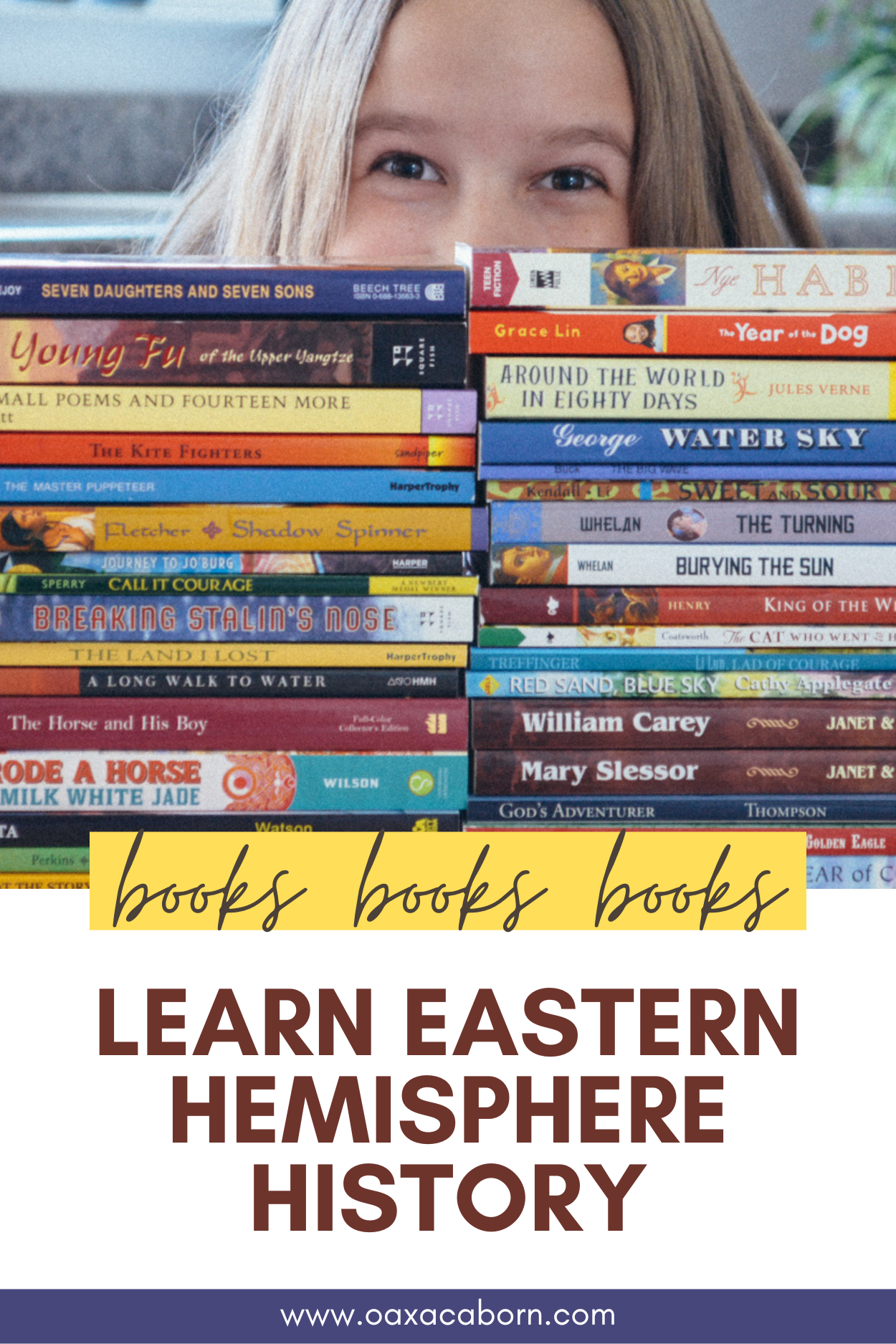
Disclosure: Sonlight provided me with History/Bible/Literature F: Eastern Hemisphere (4-day version) and compensated me financially for this post. I have used many Sonlight products in our homeschool prior to reviewing this product. All opinions — and photographs! ;) — are my own, and I was not required to write a positive review.
The case for exploring non-Western cultures in your homeschool
Finally, Level F! I’ve been waiting to study Eastern Hemisphere countries with Sonlight ever since we opened our first big blue binder years ago. And at last, Aveline is the right age. I’m so excited!
Sonlight’s History / Bible / Literature F: Eastern Hemisphere (HBL F) — designed for students ages 11-14 or grades 6-9 — is a year-long history and literature curriculum focused on non-Western countries. I don’t know of any other program quite like this! (Take a look.)
So, how does it work? First, it’s completely open-and-go (more on this later). And second, it’s centered around a gloriously tall stack of exceptional books.

Using a blend of
- diverse novels,
- historical fiction,
- missionary biographies,
- modern classics,
- history,
- geography,
- consumable student pages,
- discussions,
- current events,
- timeline figures,
- mapwork,
- an Instructor’s Guide containing teaching helps for every book you’ll read, and
- hands-on activities,
Sonlight HBL F will immerse you in the worlds of
- China,
- North & South Korea,
- Japan,
- Russia,
- Southeast Asia,
- Vietnam,
- India,
- the Middle East,
- Israel,
- Saudi Arabia,
- the continent of Africa,
- the Pacific Islands,
- New Zealand,
- Australia, and
- Antarctica.
→ This post is long. I wrote it all myself. I'll never, ever, use ChatGPT or any other artificial intelligence tool to generate any kind of content, or ideas for content. You have my promise.
Why am I so excited to dive into a study of non-Western cultures? Why have I been counting down to Sonlight’s HBL F for years? In other words, why does this matter?
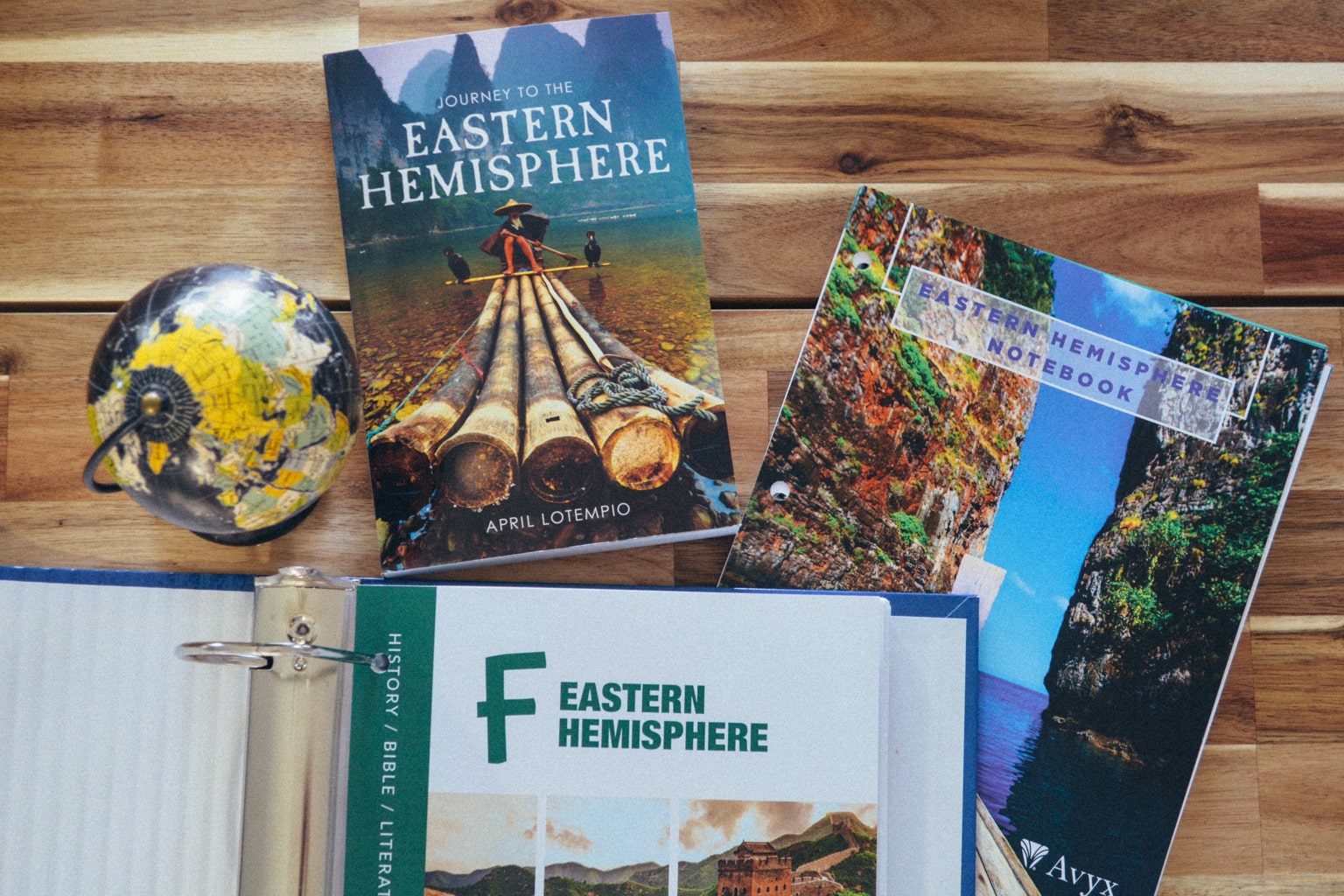
Why study the Eastern Hemisphere? Why focus on non-Western cultures?
I hope you’ll forgive me for answering all these questions with another: why not?
No, seriously. Why not? Studying with a global worldview in mind should be the norm, not the exception.
After all, over 80% of the world’s population calls the Eastern Hemisphere home. What a welcome respite it is to dip away from the repetitive cycles of ancient, medieval, and modern history to focus on the people, cultures, and history of the Eastern Hemisphere.
That’s right: eighty percent of the world’s population lives in the Eastern Hemisphere. If you’re reading this as a resident of a Western Hemisphere nation such as the the United States, you’re in the minority. Most of the world is Eastern. To overlook such a large swath of humanity would be a tremendously grave oversight!
We need to teach our kids about the Eastern Hemisphere.

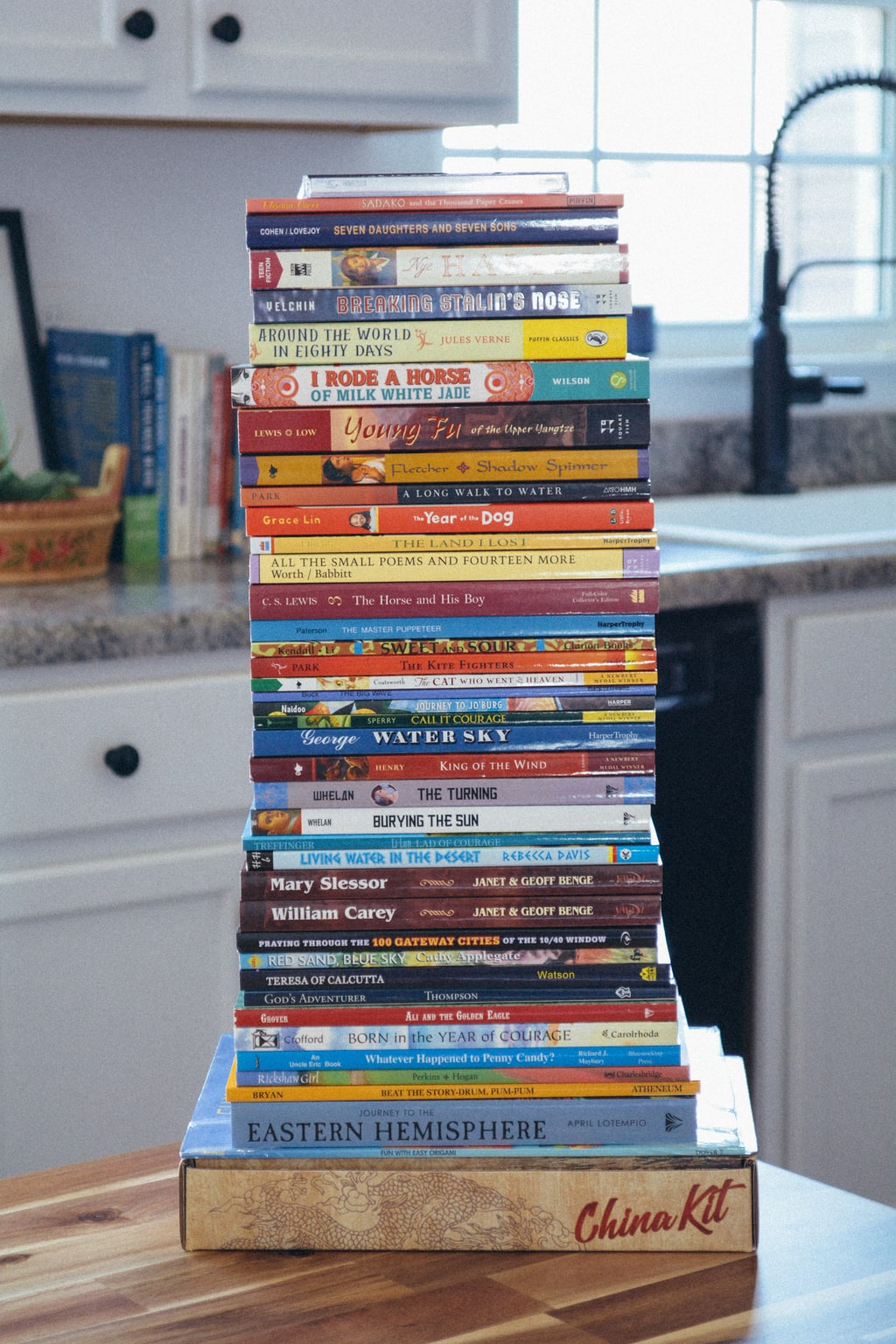
And seventy percent of the world’s population doesn’t speak English. In light of the vast diversity of God’s world, then, we’d be doing our kids a great disservice to craft a merely anglocentric education. In fact, I’d go so far as to say an education which only focuses on one’s own country — with a few ancient civilizations thrown in — is not an education. (Perhaps that’s a touch harsh; at the very least, this isn’t the worldview I want to pass on to my kids. That one homeschool curriculum publisher which teaches American history from discovery through modern era eight full times in twelve years? Nope. Not for me.)
We need to teach our kids about non-western cultures.
If the Instagram Reel above doesn't display, click here to view I'm the daughter of a Bible Smuggler.A Global Perspective is a Christian Perspective
Nurturing a global perspective is a fundamental responsibility, especially as Christians! Think about it: we serve a global God. Jesus — who walked on earth as a fully-divine, fully-human, Middle-Eastern man — made this global view very clear in his final command:
- “Go therefore and make disciples of all the nations.” (Matthew 28:19)
- “Go into all the world and preach the gospel to all creation…” (Mark 16:15)
- “You shall be my witnesses…even to the remotest part of the Earth.” (Acts 1:8)
If we are to view the world as God does, we must step out of our own narrow perspective into a broader view.

Teaching our kids about global peoples…
- …allows them to step into the daily lives of those who live outside their realm of experience,
- …broadens their horizons,
- …nurtures in them a deeper love for others, and
- …prepares their hearts to respond to the Great Commission.
“Imagine,” says a note inside the Instructor’s Guide, “are you likely to go someplace or serve a people group you’ve never heard of? Hardly!”
That is why I am excited to study the Eastern Hemisphere.

Do you think perhaps a study of the Eastern Hemisphere is irrelevant or impractical?
I previously wrote, "As parents, we must be sensitive to the ways in which the Holy Spirit leads our children individually. When our children express a softness to a particular culture, or ask to study a certain language we find obscure, we must be careful not to dismiss these wishes too hastily in the name of impracticality. God is bigger than our man-made obstacles of impracticality, and we must be particularly cautious as parents not to get in the way of God’s leading. We can have no way of knowing, now, if God will call them to a lifetime of service right here in their hometown or if He’s leading them halfway around the globe. But God knows..."
And if non-Western cultures seem completely disconnected from where you are right now, I'd gently suggest that's all the more reason you should consider studying the Eastern Hemisphere. Read more: 7 Reasons to Homeschool from a Global Perspective.People are the focus of Sonlight’s Eastern Hemisphere curriculum, History / Bible / Literaure F
Nearly every day for 36 weeks (more on Sonlight’s super easy open-and-go schedule later), students read a couple of pages from a slim book called Praying Through 100 Gateway Cities of the 10/40 Window. In doing so, they’ll not only gain information about groups around the world, but more importantly, a heart for people.
Each one-page profile in 100 Gateway Cities includes
- a small map,
- demographic stats,
- a list of prayer points, and
- a quick narrative summary of the area or group’s history.
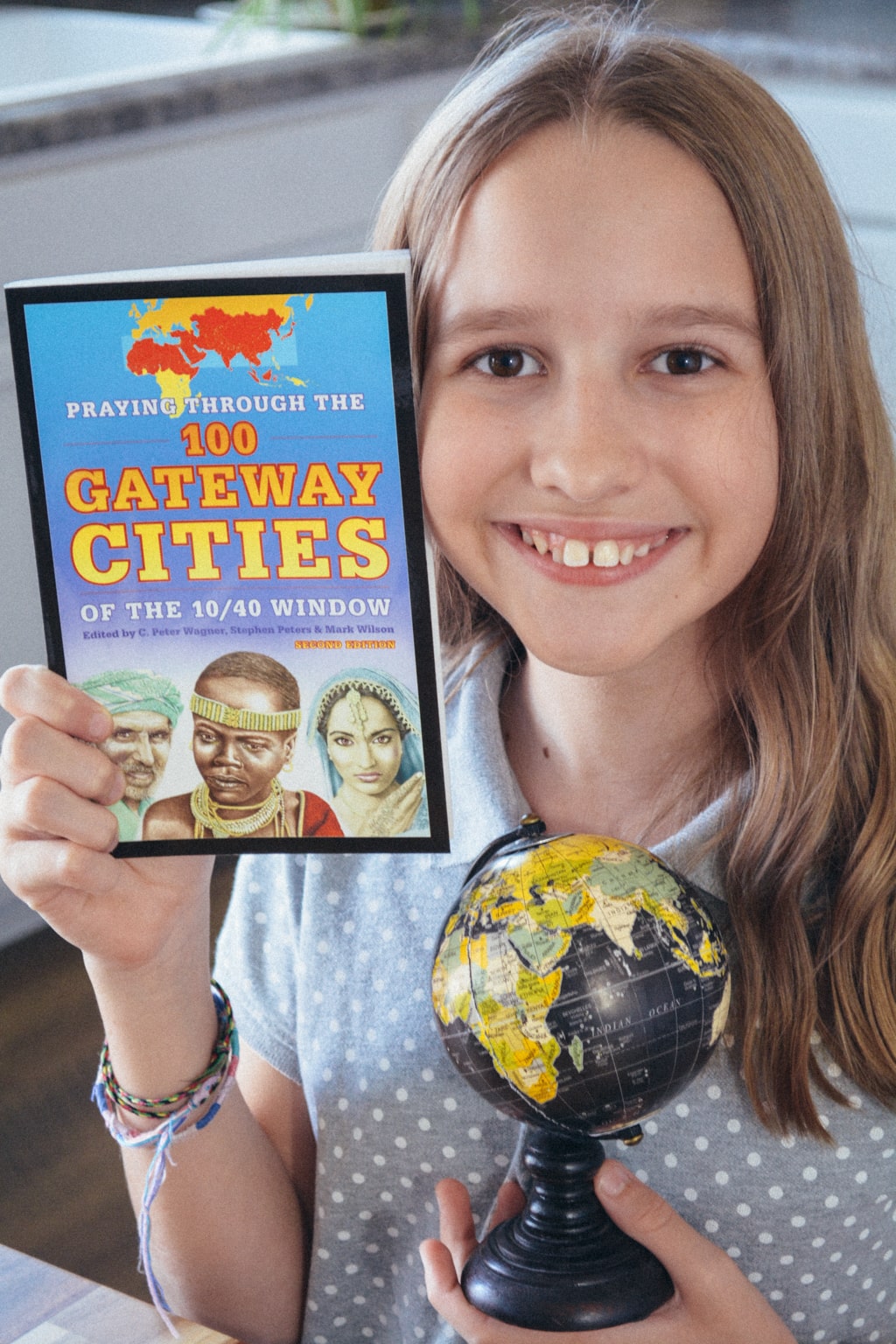
As the introduction to 100 Gateway Cities says, “…These groups are not masses of faceless people but individuals whom God loves intimately. He knows the Puku-Geeri-Keri-Wipsi of Nigeria, the Bozos of Mali, the Hwla of Togo, and the Thae of Laos…”
Did you know about the city of Laayoune in the disputed territory of Western Sahara? Or about the Sahrawi people there? Did you know the Apostle Paul traveled through Tirana in current-day Albania, later founded by Sulejman Pasha Barjgini and now part of a predominantly Muslim nation? Or about the Chinese city of Changchun, home to many North Korean exiles? And did you know the people of Muscat in Oman, the origin of famed Sinbad the Sailor, still struggle under a sultan who does not allow religious freedom?
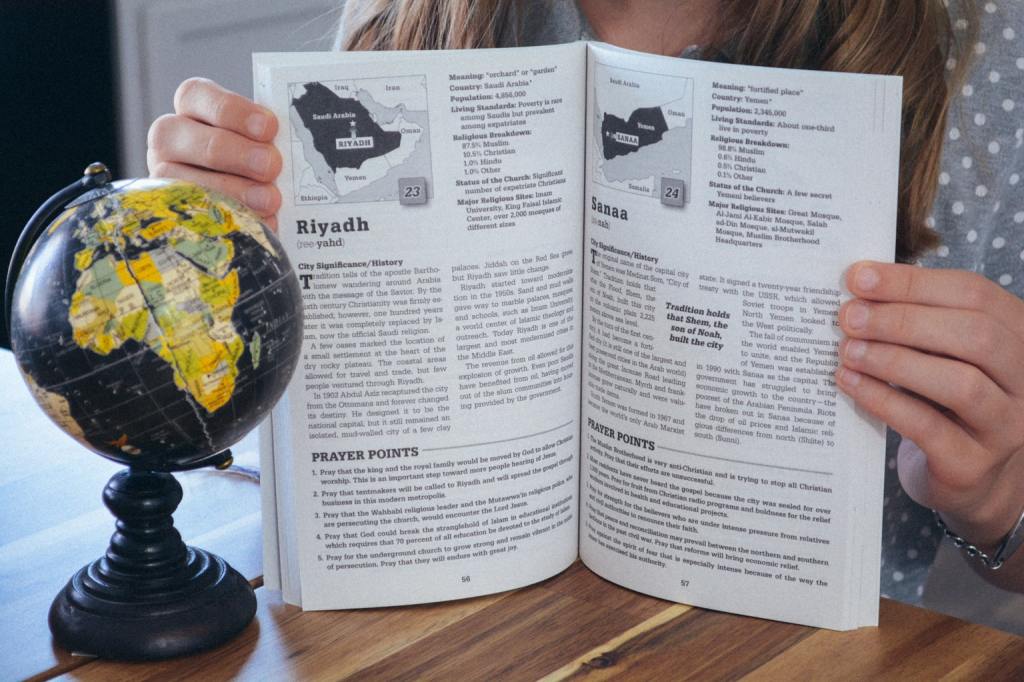
I learned all of this during a flip-through of 100 Gateway Cities; I can’t wait for Aveline to make this book a part of her daily routine — and prayer habit — alongside the rest of the Eastern Hemisphere books.
(P.S. Enter to win a Sonlight Science experiment kit before you continue!)
Our personal connection to Sonlight’s History / Bible / Literature F
Aveline, in conjunction with native speakers at the local Chinese language schools in the places we’ve lived, has been learning to read, write, and speak Mandarin Chinese since she was in three years old. She’s sung classical Chinese ballads, danced traditional folk dances, gone behind the scenes of Lion Dance performances, practiced Chinese yo-yo on stage, walked in Lunar New Year parades, and recited poetry at university celebrations. She’s spent thousands of hours studying flashcards, learning stroke order, and practicing speaking — all without any other Chinese speaker at home. Her goal since before kindergarten has been to reach fluency, so she can travel and effortlessly communicate with people.
See, her motivation for learning is people. This is the correct perspective, and this is how we should approach a study of non-Western cultures as well.

I was born in the Western Hemisphere (southern Mexico) but spent my early childhood in the Eastern Hemisphere (the former Yugoslavia, behind the Iron Curtain). During Communist times, my missionary dad smuggled bibles into the USSR and other Soviet Bloc nations while my mom homeschooled us so we wouldn’t have to be indoctrinated into the Young Pioneers. And last year, as an adult, I took a Russian language class in an attempt to regain remnants of lost Slavic language from the dusty corners of my brain.
You can see why our family is excited to study the Eastern Hemisphere.

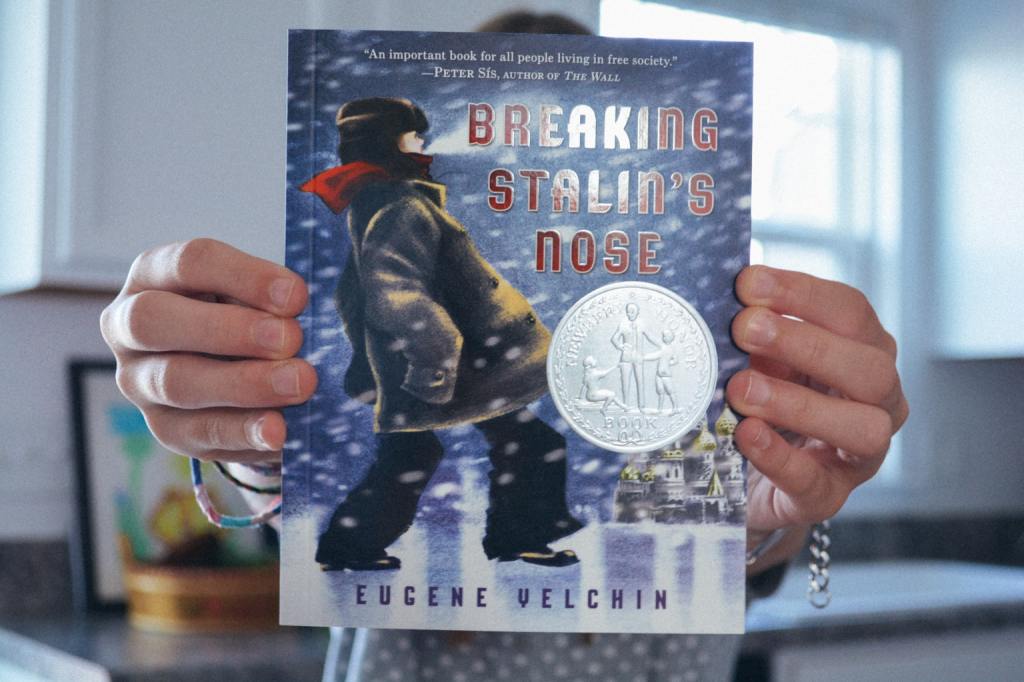
Each week, I also teach online for a small culturally-diverse homeschool co-op with an intentionally global focus. Many of the books I had previously selected for our co-op reappear in History / Bible / Literature F :
- Breaking Stalin’s Nose, by Russian immigrant Eugene Yelchin (read more about the Young Pioneers!)
- The Land I Lost, by Quang Nhuong Huynh, the first English-language book published by a Vietnamese-American author
- Long Walk to Water by Korean-American author Linda Sue Park, based on the true story of Salva Dat, one of the Sudanese Lost Boys
- Where the Mountain Meets the Moon, a mythological novel by Taiwanese-American author Grace Lin
- A Beautiful Lie, Irfan Master’s heartbreaking tale about the 1947 partition of India (The last two titles are in the 5-day version of Level F.)
I’m excited to see some of my very favorite modern books included in History / Bible / Literature F. But I’m even more excited there are so many more books here I’ve never read.

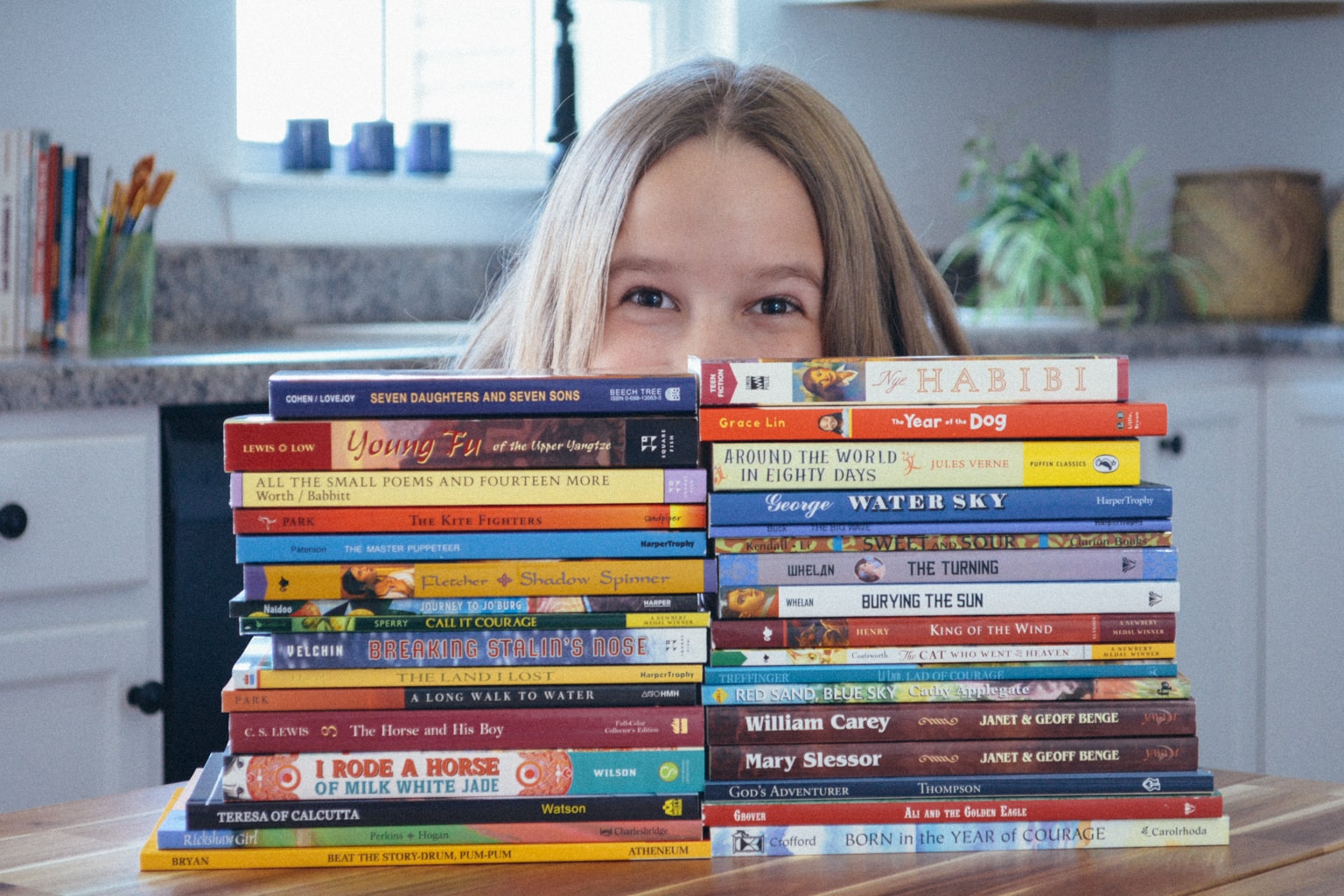
As I have begun to read the new-to-me titles, I’ve quickly realized my list of favorite international books is about to grow — by a lot. For example, Linda Shihab Nye’s Habibi, written from a Palestinian point of view, is an utter masterpiece. I kept putting the book down to copy her poetic prose. It’s glorious! And having left Eastern Europe myself in the unstable year of 1991, how could I not love Gloria Whelan’s USSR-based novel The Turning, set in 1991?
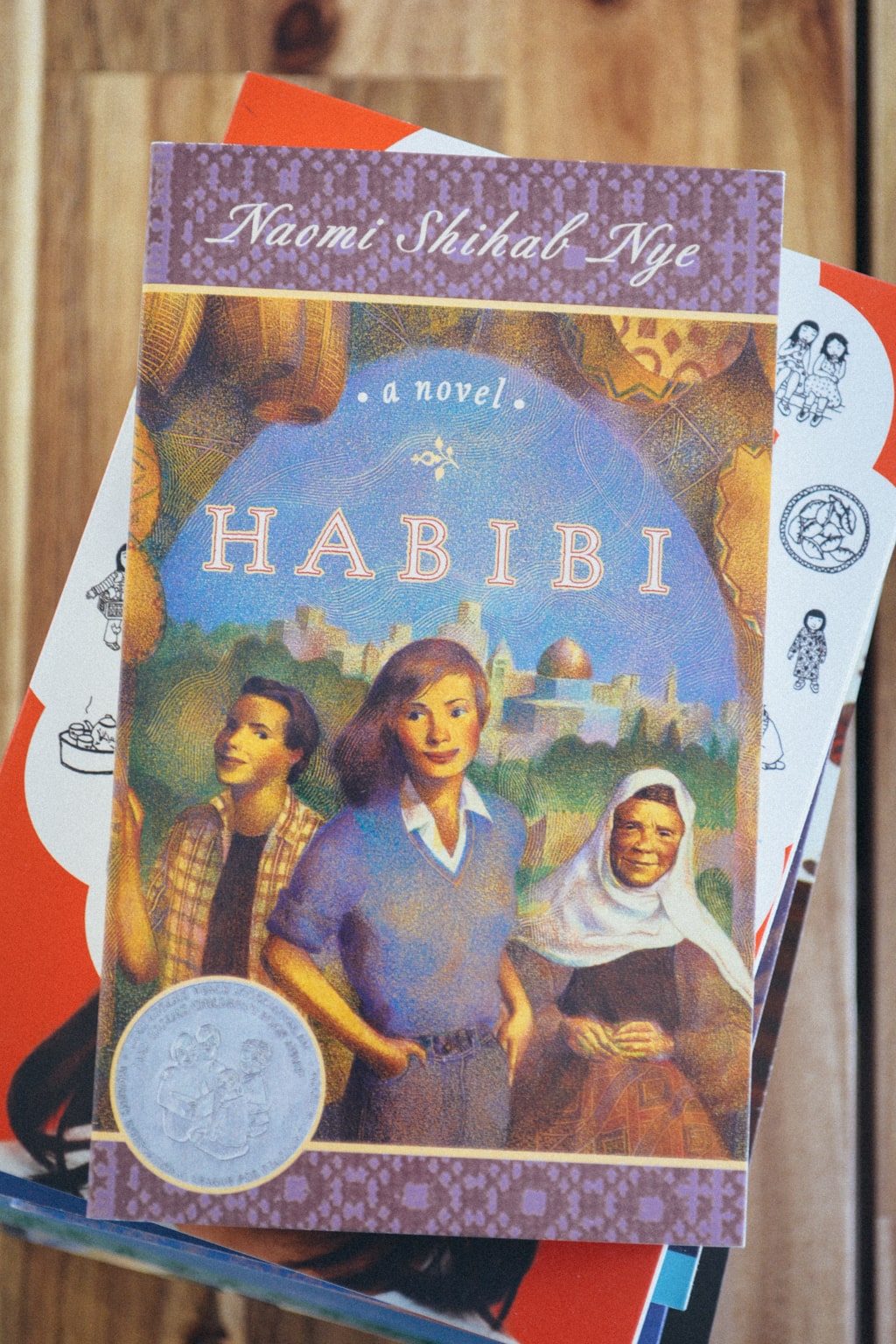
Wondering how to start homeschooling?
Here’s what homeschool laws are like in Tennessee, where I live. Not in Tennessee? See the homeschool laws in your state.

Sonlight is a literature-based history and geography curriculum, which means lots of books.
The 4-day version of Sonlight’s Eastern Hemisphere curriculum contains almost forty books total — thirty-nine, if I counted correctly. And the 5-day version has more. (You might be wondering just how a literature-based curriculum works…here’s how.)
History is integrated into all the book selections in Level F, from diverse novels and historical fiction to inspirational biographies and modern classics.
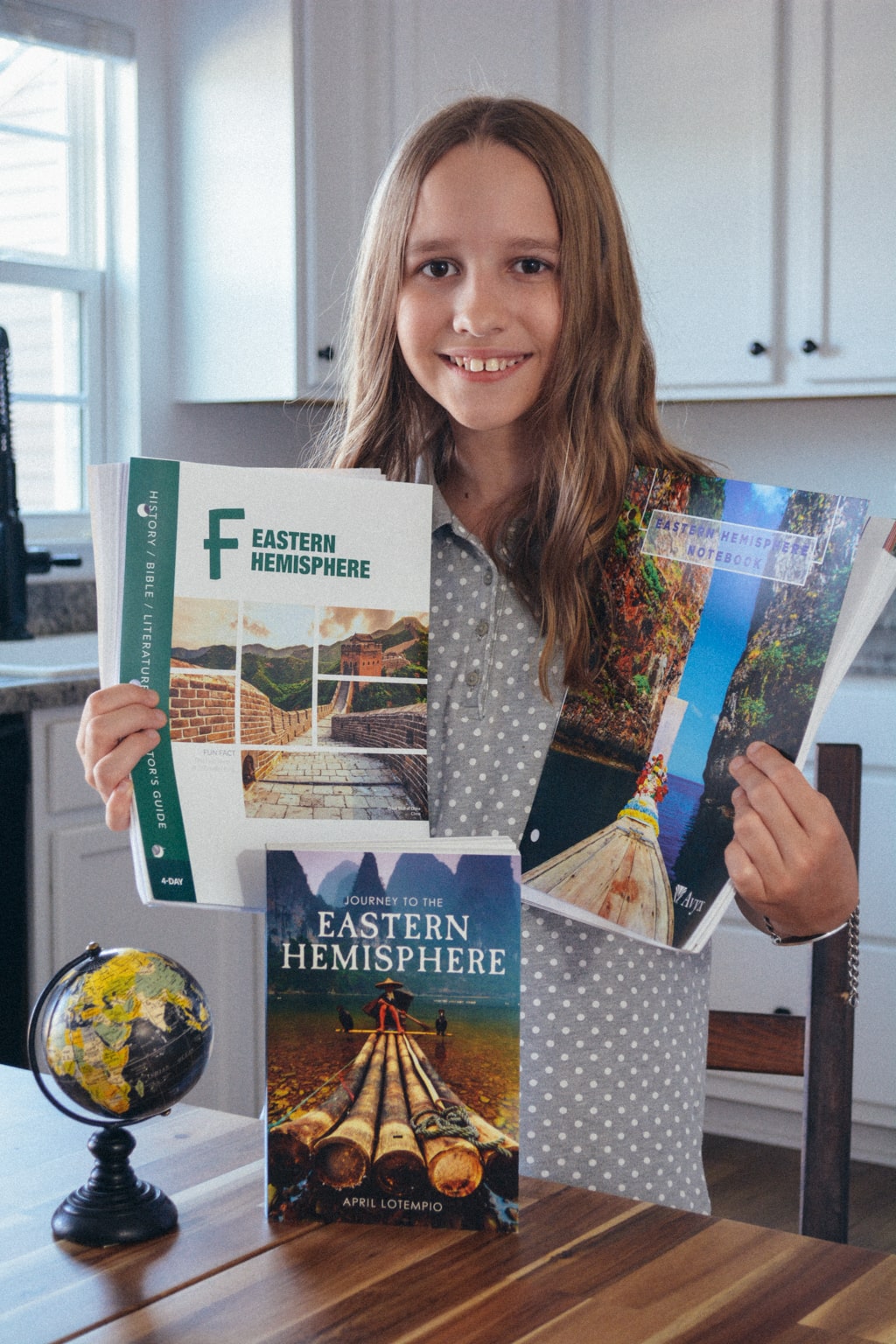
But a few particular titles are considered spines, since they are used nearly daily throughout the entire year:
- Journey to the Eastern Hemisphere,
- the accompanying Eastern Hemisphere Notebook, and
- 100 Gateway Cities.
Also filed under history are
- Sadako and the Thousand Paper Cranes,
- Living Water in the Desert, and
- Whatever Happened to Penny Candy?
Sadako and the Thousand Paper Cranes is a slim book, but it’s presented in conjunction with a year-long challenge to create one thousand paper cranes. (More on additional hands-on components a little later.) And Living Water in the Desert follows the stories of fourteen people living in Iran.
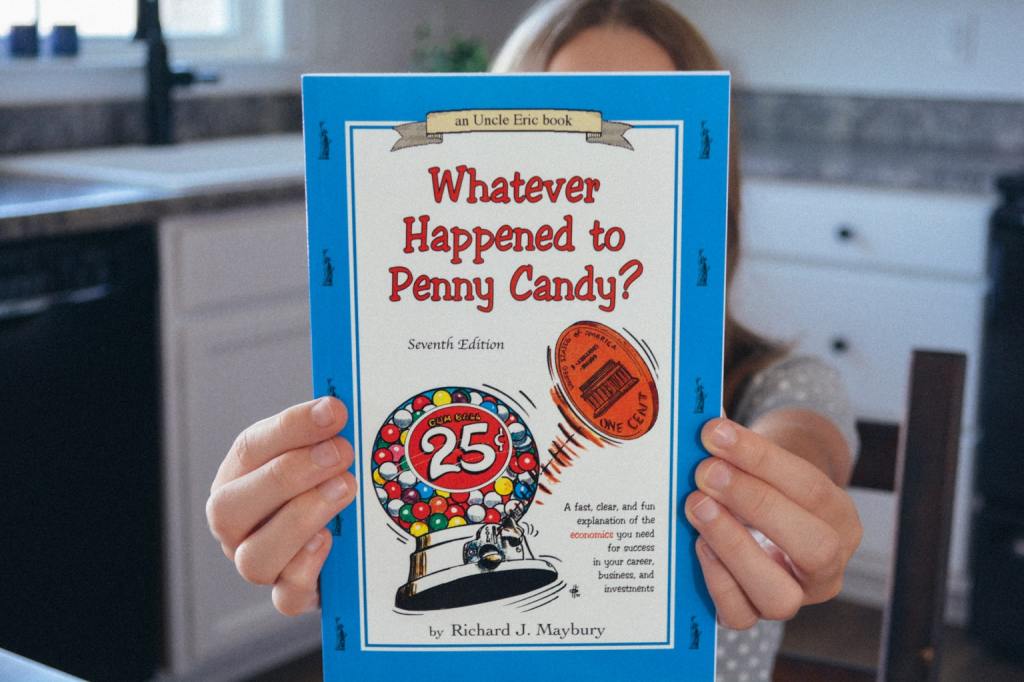
Wondering how an economics book like Whatever Happened to Penny Candy? ends up in a study of the Eastern Hemisphere? The Instructor’s Guide explains, “As we study communism and the impact it has on nations, we break and read about the opposite theory, capitalism.” Of course, as your students read through History / Literature / Bible F, they will soon discover that communism is far deeper and more insidious than mere economic theory. (Anyone who tells you otherwise needs to read more history.)

Exceptional books you’ll read aloud in History / Bible / Literature F
The literature in each Sonlight level is divided into read-alouds, books parents read to the student, and readers, books students read to themselves.
Here are the sixteen fantastic read-alouds included in History / Bible / Literature F. (The 5-day version has three more.)


- Young Fu of the Upper Yangtze
- All the Small Poems
- The Kite Fighters
- The Master Puppeteer
- I Rode a Horse of Milk White Jade
- Breaking Stalin’s Nose
- The Land I Lost
- Rickshaw Girl
- Teresa of Calcutta
- Shadow Spinner
- Seven Daughters and Seven Sons
- A Long Walk to Water
- Beat the Story-Drum, Pum-Pum
- Journey to Jo’burg
- Call it Courage
- The Horse and His Boy
Extraordinary books your student will read in History / Bible / Literature F
And here are the seventeen marvelous books your student will read independently. My advice? Read these in your free time, too. You won’t want to miss any. (The 5-day version contains five more.)

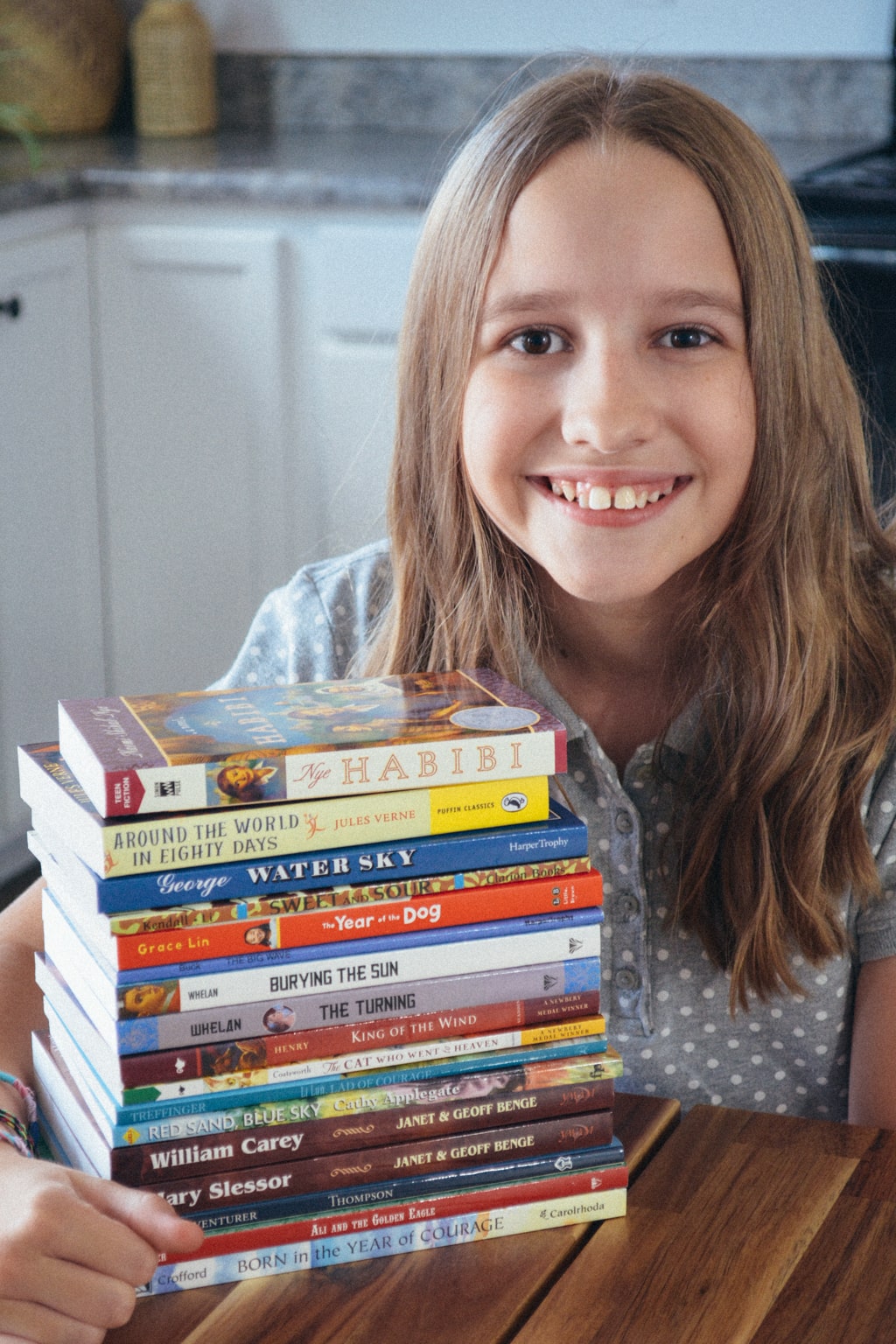
- Li Lun, Lad of Courage
- Sweet and Sour: Tales From China
- The Year of the Dog
- God’s Adventurer: Hudson Taylor
- The Big Wave
- Born in the Year of Courage
- The Cat Who Went to Heaven
- Burying the Sun
- The Turning
- Around the World in Eighty Days
- William Carey: Obliged to Go
- Ali and the Golden Eagle
- Habibi
- King of the Wind
- Mary Slessor: Forward into Calabar
- Red Sand, Blue Sky Water Sky
Missionary biographies you’ll encounter in History / Bible / Literature F
As you might expect, a Christian curriculum centered around “all the world” (Mark 16:15) includes missionary biographies and testimonies.

Inside the pages of the readers and read-alouds listed above, kids will read about the lives of
- various believers and missionaries (Iran),
- William Carey (India),
- Mother Teresa (India),
- Mary Slessor (Nigeria),
- Hudson Taylor (China), and
- Matteo Ricci (China; 5-day version).
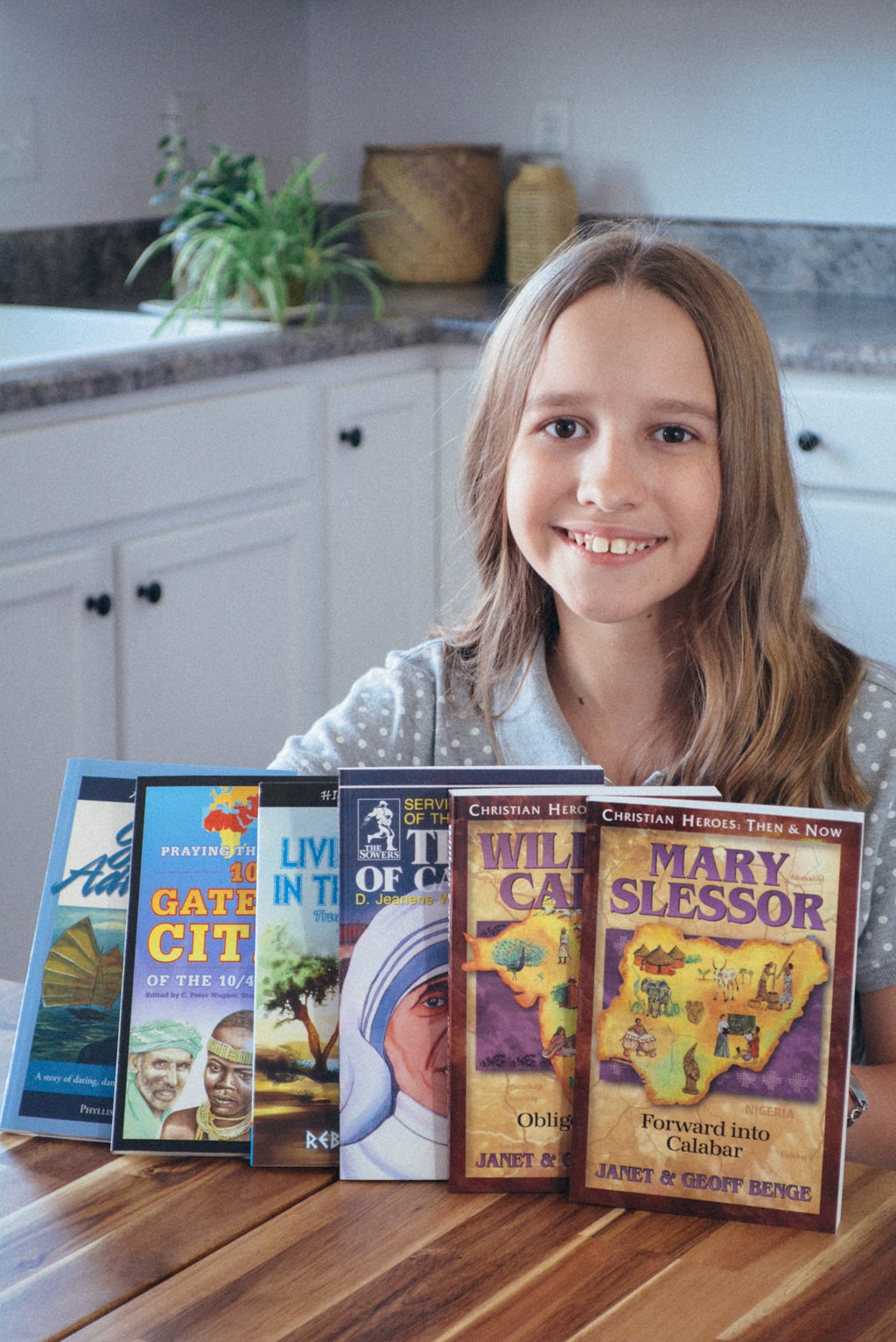
I grew up learning about many of these same faithful men and women! I am so honored to pass down this godly heritage to my daughter, as my own parents did for me.
(Kids will read through The Radical Book for Kids, too. This apologetics text replaces the previously-included Lee Strobel trilogy for kids, A Case for a Creator, for Christ, and for Faith, which was moved to Level E.)
And, they’ll read — and memorize — lots of Scripture passages.

Journey To The Eastern Hemisphere: Level F’s relatively new spine
Now that we’ve seen the book stacks, let’s look a little more closely at the main history and geography spine Journey to the Eastern Hemisphere, which is assigned nearly daily throughout the 36-week school year.
This narrative textbook replaces the previous spine for this level, which was a digital version of World Book Encyclopedia.
Journey to the Eastern Hemisphere is a fascinating read! Granted, I already love history, but I found myself completely wrapped up in it.
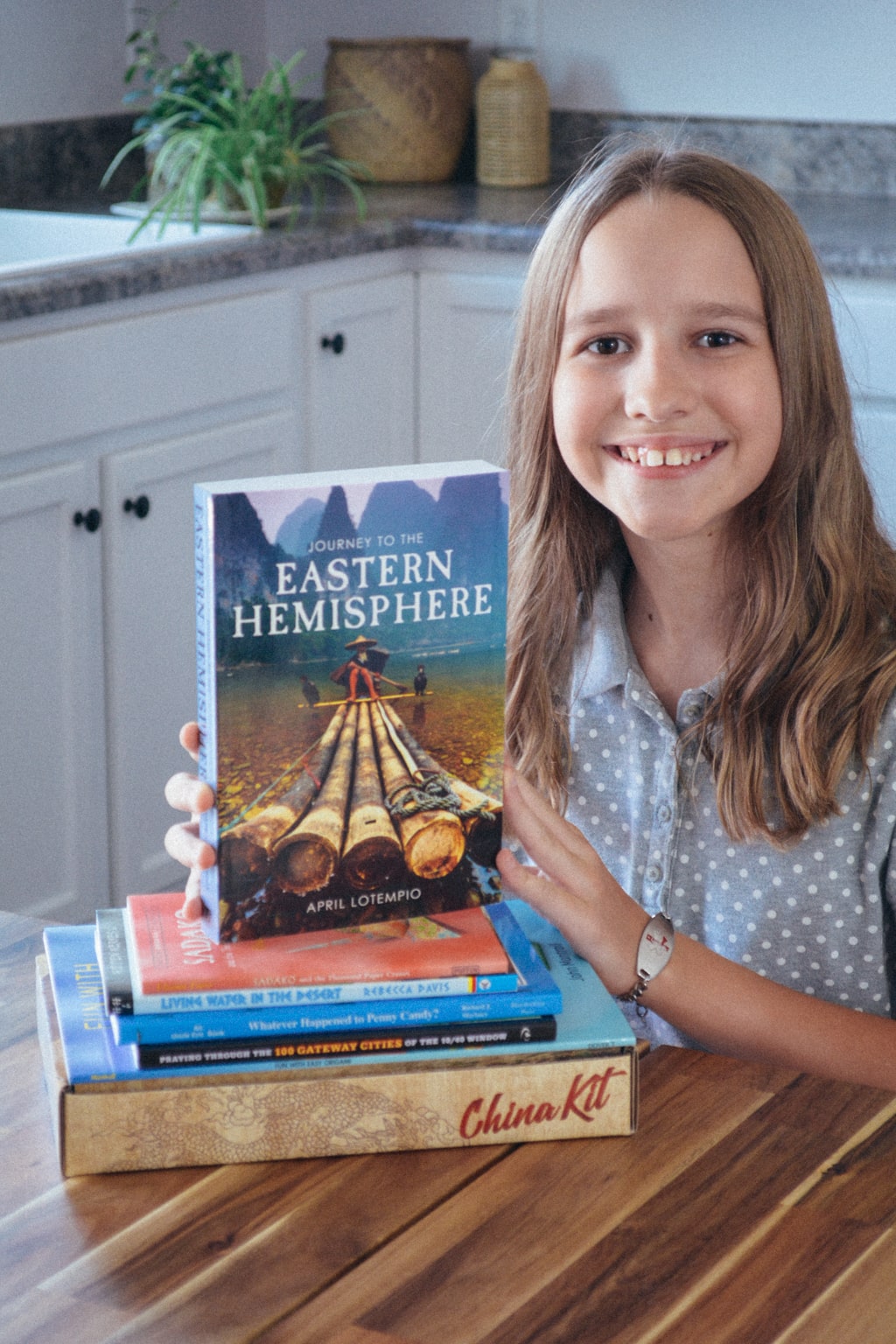

While it’s not an easy task to pack the history and culture of so many completely different nations into relatively short chapters, this book does a really solid job. Over the course of four hundred pages, kids — and curious adults like me! — learn the
- history,
- geography,
- demographics, and
- culture
of over a dozen countries and regions, including
- China,
- North & South Korea,
- Japan,
- Russia,
- Southeast Asia,
- Vietnam,
- India,
- the Middle East,
- Israel,
- Saudi Arabia,
- the continent of Africa,
- the Pacific Islands,
- New Zealand,
- Australia, and
- Antarctica.
To view a full-color sample of Journey to the Eastern Hemisphere, go to the Sonlight History / Literature / Bible F page, then click on the Samples tab.
Studying eastern cultures offers middle-schoolers a unique perspective

Sonlight’s History / Bible / Literature F is like nothing else. Think of the average middle school history education. Where else — even amongst homeschool curriculum — will kids be asked learn about Kasmhir, Maori-Pekah relations, False Dmitry, the New Zealand Wars, or South Korea’s quality of life in the 1980s?
The Eastern Hemisphere Notebook: Level F’s colorful student pages
Alongside the Journey to the Eastern Hemisphere textbook, students will complete the consumable Eastern Hemisphere Notebook. This stack of beautifully-designed looseleaf workbook pages is divided into fifteen sections, each country or region appearing in the order they’ll be encountered in the textbook.


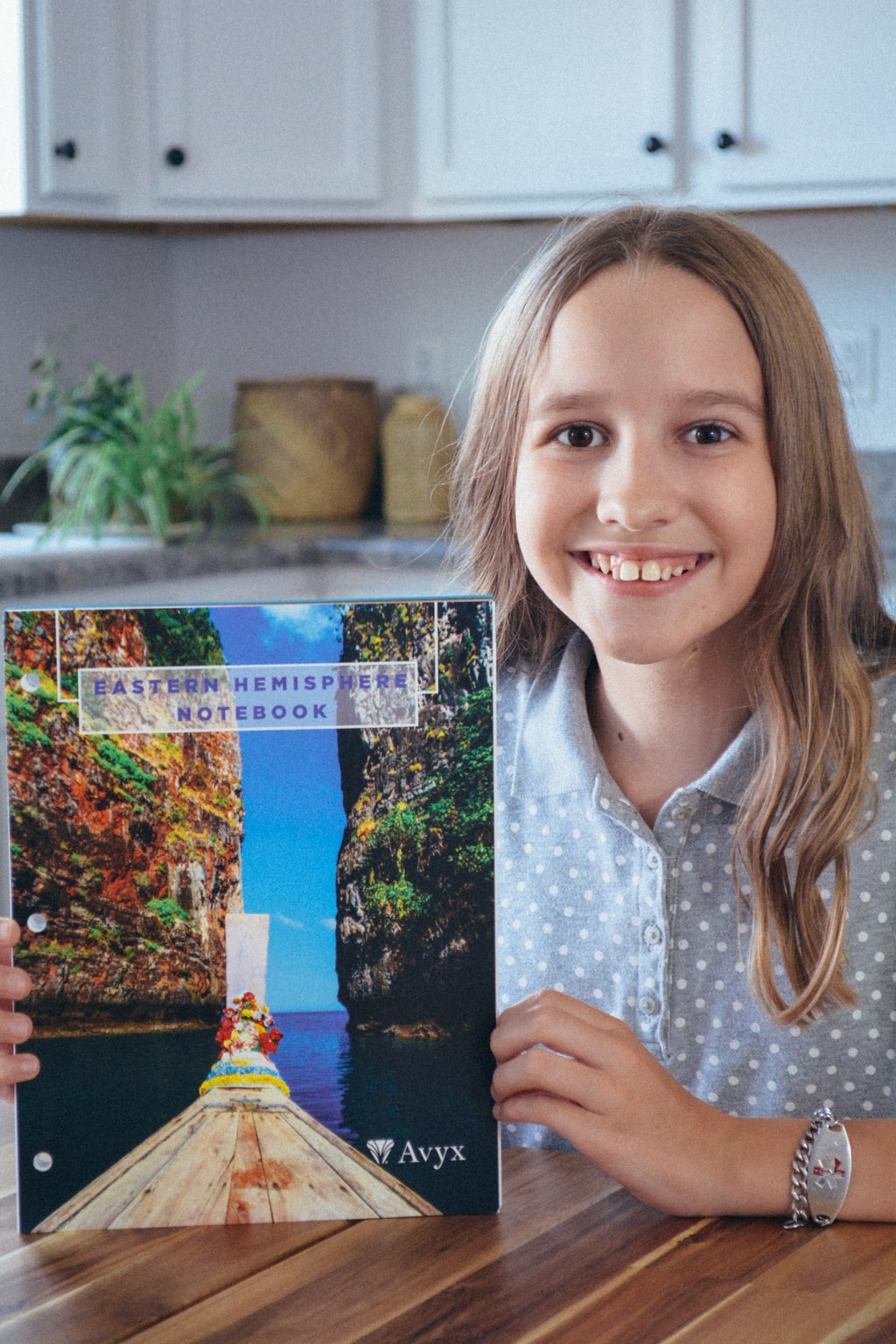
This is unique for Sonlight Curriculum. Sonlight history and literature in the pre-high school levels generally involves reading and discussion (or what they call the Couch Subjects), but not writing (which would be considered one of the Table Subjects.) Level F, though, incorporates both reading and writing for history. And do you know what? I love it.
Not only is the consumable Eastern Hemisphere Notebook an excellent gentle preparation for the increased demands of upper-level grades, it’s also a way to make sure kids are fully engaging with all the information packed into Journey to the Eastern Hemisphere. There’s a lot of info there. The notebook helps students synthesize it all, including grappling with thought-provoking questions on government and religion, and considering how -isms impact everyday life.

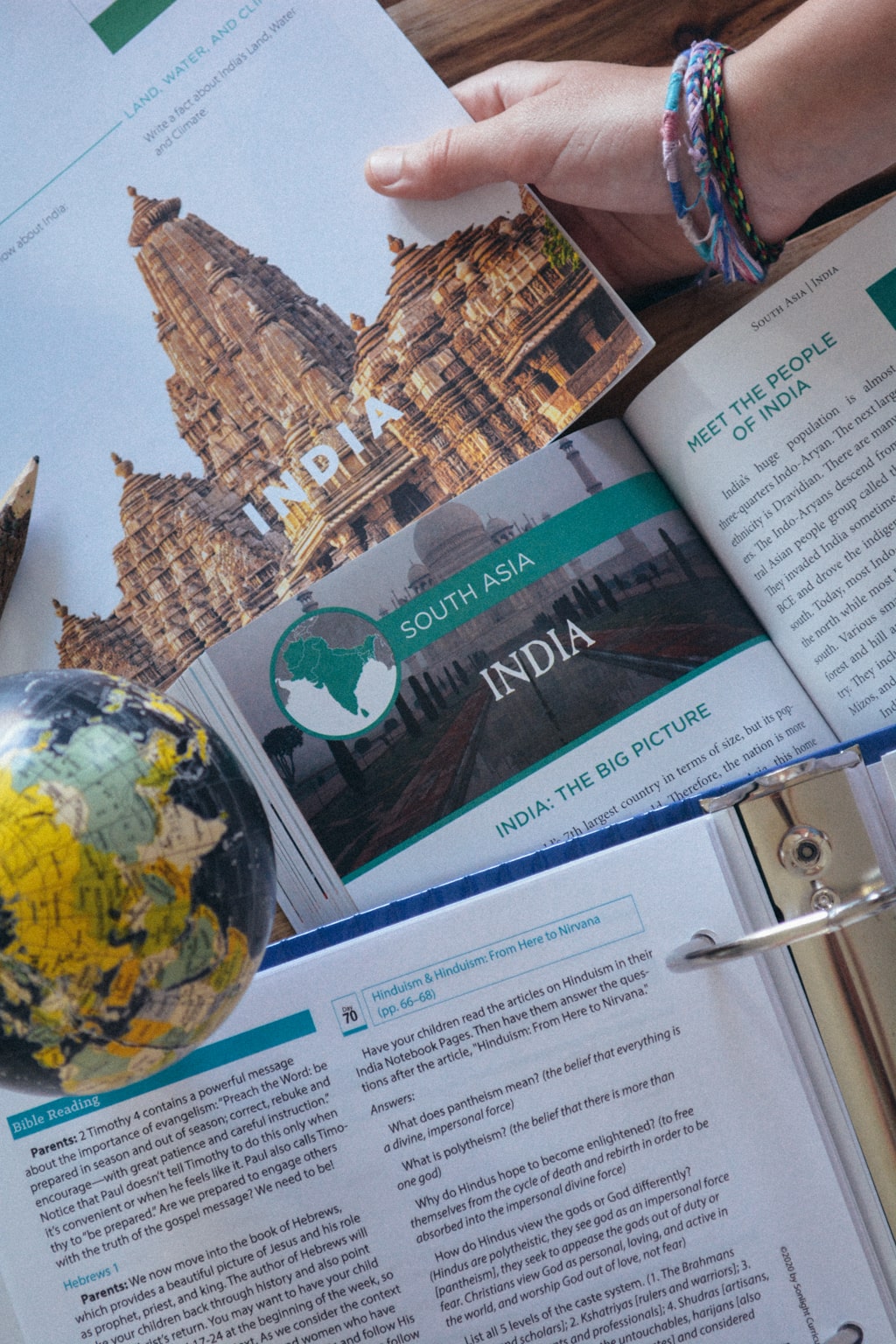
Students will complete
- big-picture overviews,
- country- or region-specific history,
- guided mapwork,
- concise timelines,
- short writing prompts, and, at the end of each chapter,
- suggested hands-on projects.
I’m really excited about this — and so is my seventh-grader.
To view a full-color sample of Sonlight notebooking pages, go to the Sonlight History / Literature / Bible F page, then click on the Samples tab.
Sonlight’s Level F is a literature-based curriculum, but it includes a wide variety of hands-on projects!
Each of the fifteen chapters in the Eastern Hemisphere Notebook ends with a list of suggested hands-on activities. Since multiple ideas are listed, kids can select projects which most closely match the way they learn. Some students may want to research and compile facts, while others may prefer to tackle a sculpture. There’s a wide range of flexible project options for every kind of learner.
In addition, the separate Fun with Easy Origami book includes enough paper to begin folding cranes alongside a read-through of Sadako and the Thousand Paper Cranes. (The Instructor’s Guide challenges students to fold additional cranes — one thousand! — over the course of the school year.)
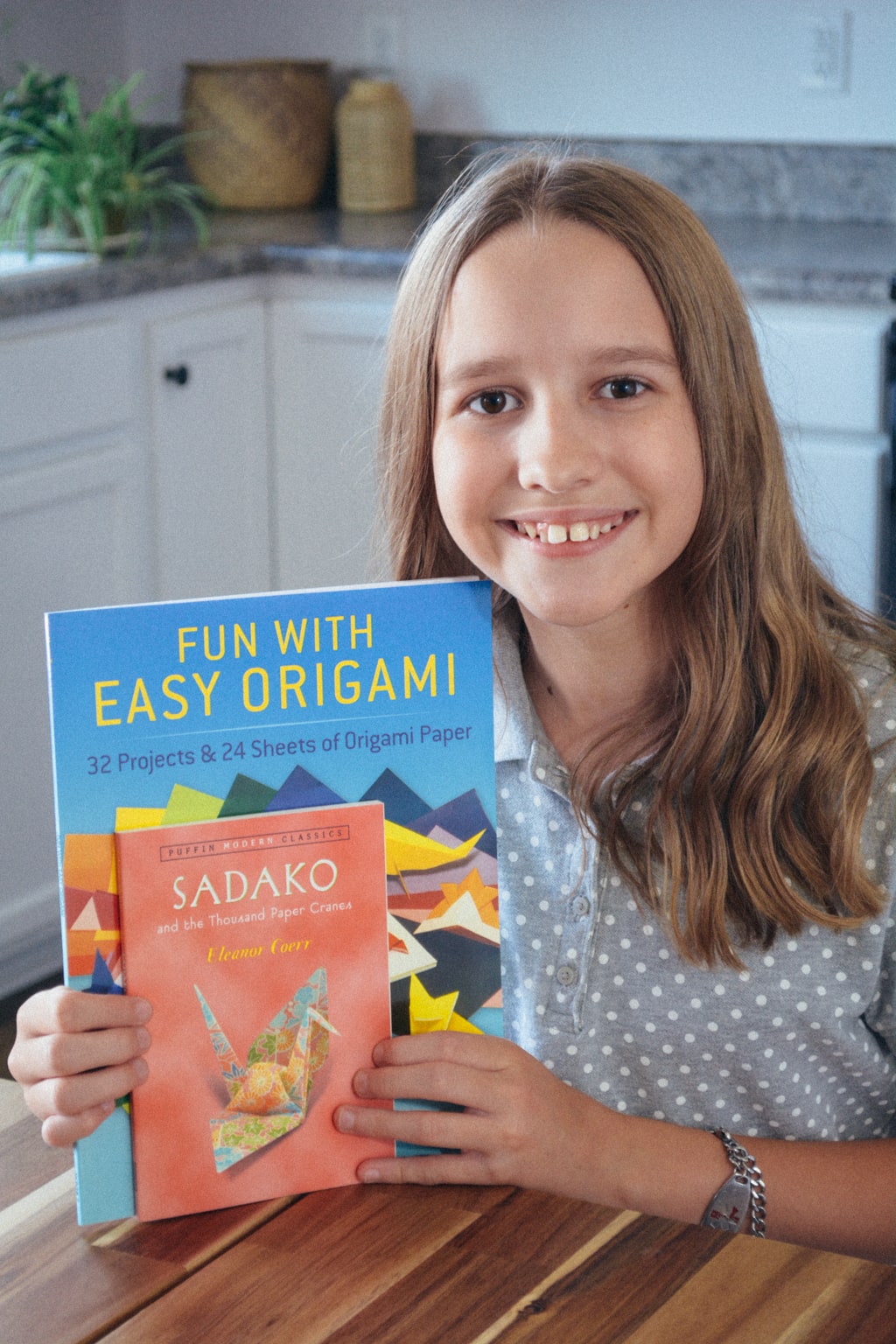
And the China Kit contains
- traditional calligraphy brushes,
- an solid ink stone,
- a ceramic brush rest,
- rice paper, and
- paper domino cards.
We’ve dabbled in Chinese brush painting before, but never with a kit this stunningly beautiful! Aveline — as you can tell from her expression here — is thrilled!


I’ve shared why I think teaching non-Western cultures is absolutely fundamental. I’ve shared our personal connection to the Eastern Hemisphere. And even with all that, I don’t think I’d want to teach these books without the help of the Instructor’s Guide. If you’re on the fence about this guide, let me encourage you it’s worth it.
The Sonlight Instructor’s Guide is so much more than an open-and-go schedule.
A Sonlight Instructor’s Guide is easy to use. I like to joke that it does everything but make the coffee. All you have to do is brew a cup of coffee and flip open your big blue binder, and you’ll know exactly what to read every day.
Your IG, as the Instructor’s Guide is affectionately called, gives you your week-at-a-glance schedule in a one-page grid. This is a a must for both easily-overwhelmed and no-nonsense moms, not to mention distractible students.
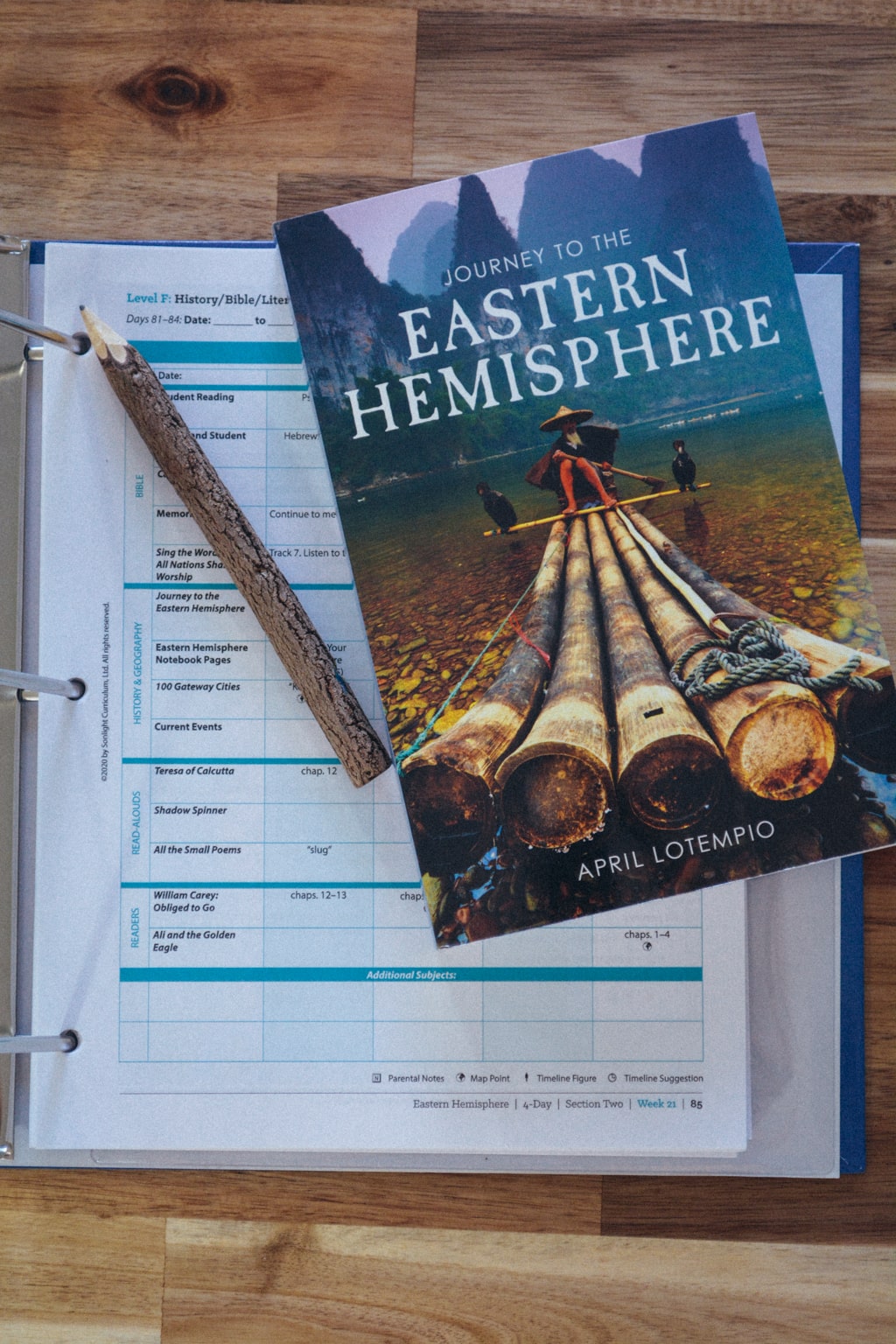

Your IG also
- defines vocabulary words for you,
- provides rich historical context,
- gives discussion questions and answers,
- tells you when to stick a timeline figure in your timeline book,
- guides you to the coordinates on your laminated map during geography work, and
- keeps you on track when you don’t have the energy to lesson-plan.
Yes, it is a no-prep schedule. It’s an executive assistant. That’s true. But your Instructor’s guide also is your guide to nuanced discussions with your middle-schooler. Wherever difficult topics need to be addressed more deeply than simply reading the book can afford, the Instructor’s Guide steps in.
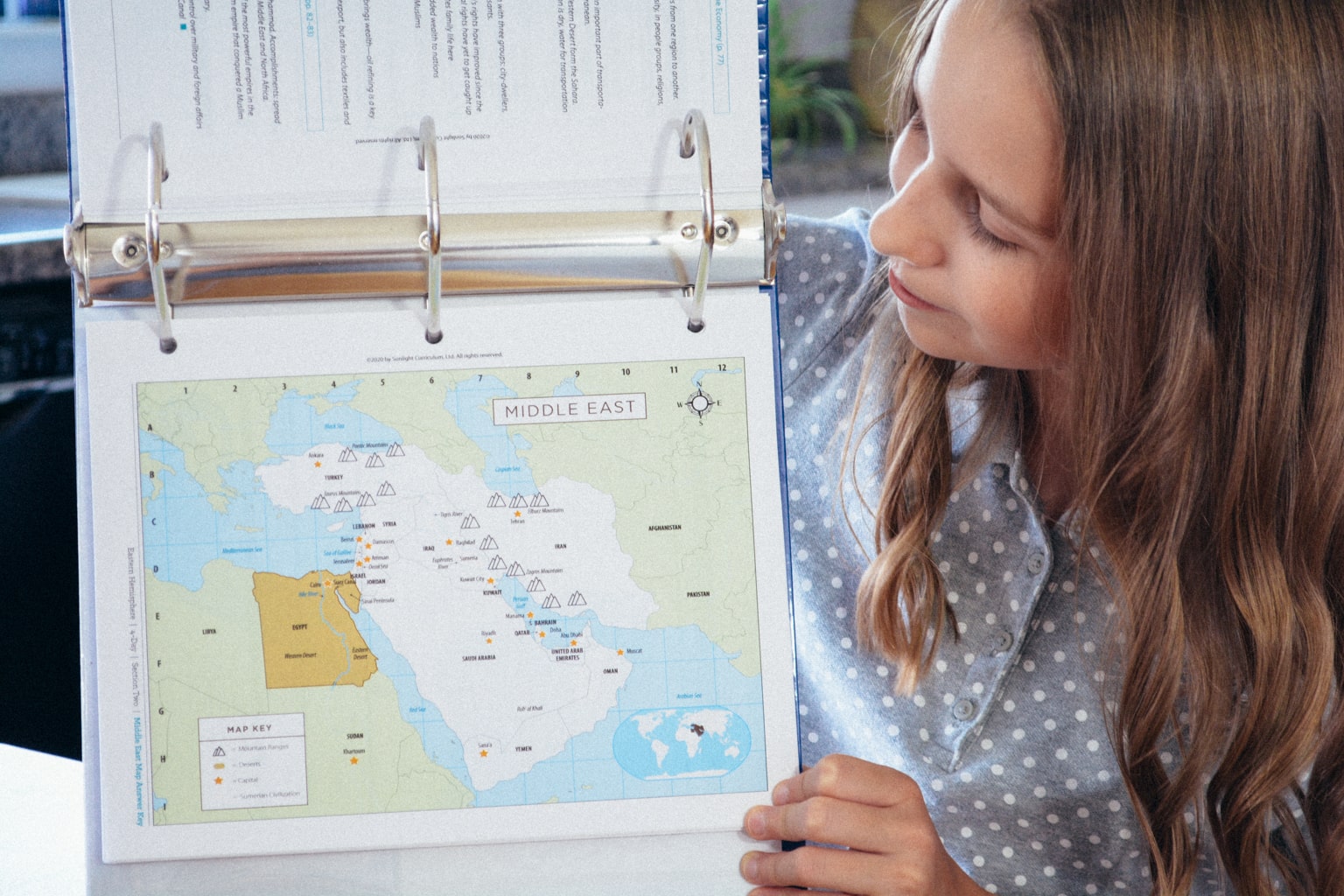
The Instructor’s Guide goes beyond simply alerting you to potentially controversial content; it’ll encourage you to discuss complex topics with your kids, and help you with the contextual information you need to have deeply meaningful conversations. During the chapter on India, for example, the Instructor’s Guide includes entire full-page supplemental articles on
- Jainism,
- Zoroastrianism,
- Islam,
- Sikhism,
- Christianity in India, and
- Indian cultural views of death
complete with nuanced discussion guides.
I appreciate this level of thoughtfulness in a teaching resource. Sonlight never runs away from complexity, but faces it head-on.
See an Instructor’s Guide for yourself. Here are the first three weeks of this level (HBL F), FREE!

I’ve done a lot of Sonlight levels so far, and Level F strikes me as particularly profound. I don’t want to rush this one.
Since we’re incorporating this study of Eastern Hemisphere cultures into an already full schedule — including our co-op, two outsourced foreign language classes, two different science curriculums, culture clubs, high school math, all the other school subjects, and a pre-kindergartner (ha!)– I am giving myself the freedom to take as long as we need to complete this study of Eastern Hemisphere adequately.

I want to prioritize these discussions. The underground church, persecution, Communism, the Great Commission — these are not topics I want to speed through.



Thank you so much for pouring your heart into this review, Gina! What a beautiful reminder. I was immensely blessed when reading this! And hats off to Sonlight for curating such a thoughtful selection! 🤗🙌
LikeLike